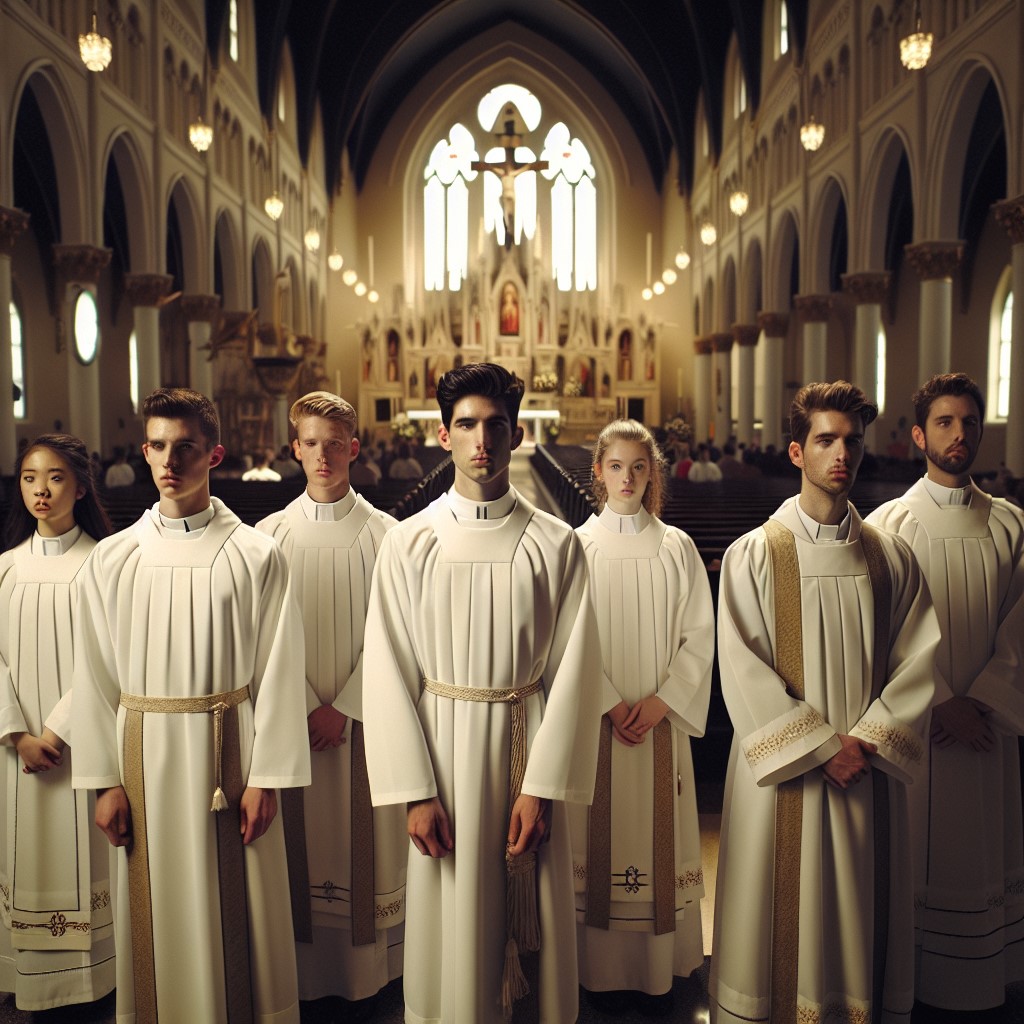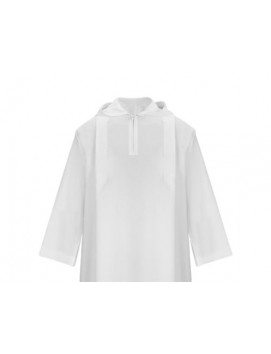Yes, altar servers often wear an alb during liturgical services. An alb is a long white robe worn over regular clothing, symbolizing the purity and innocence of the person wearing it. It is also a traditional liturgical garment worn by clergy and other ministers during worship.

Do altar servers wear collars?
No, altar servers do not normally wear collars. Collars are usually worn by ordained ministers, such as priests and deacons, to indicate their clerical status. Altar servers are lay people who help with various tasks during the liturgy, such as carrying the processional cross, holding candles and assisting the priest during Mass. They usually wear simple white surplices and may also wear a cincture or rope belt around their waist.
What do female altar servers wear?
Female altar servers usually wear the same liturgical vestments as male altar servers. This usually includes a white alb, a long white robe that covers their regular clothing, and a cincture or rope belt around their waist. Some parishes may also provide a surplice, a white tunic worn over the alb, or a cassock, a long black robe worn by clergy and servers. The specific vestments worn by female altar servers may vary according to the customs and traditions of their particular parish or diocese.
What is the dress code for altar servers?
The dress code for altar servers usually includes modest, conservative clothing appropriate for the liturgy. In general, altar servers should avoid wearing clothing that is too revealing or distracting, such as shorts, tank tops, or clothing with graphic designs or slogans.
For male servers, typical attire may include dress trousers or khakis, a dress shirt, and dress shoes. A tie or similar accessory may also be required.
For female servers, a dress, skirt or trousers with a blouse or sweater is usually appropriate. It is important to avoid clothing that is too tight or revealing, and to ensure that skirts or dresses are of an appropriate length (usually knee-length or longer).
In some cases, parishes may provide special liturgical vestments or robes for altar servers to wear during Mass. It is important that servers follow any specific dress code requirements set by their parish or diocese.
Why do altar servers wear albs?
Altar servers wear albs during liturgical services because it is a traditional liturgical vestment that symbolises their participation in the liturgy. The alb is a long, white robe that covers the server's regular clothing and is usually made of a light, breathable fabric such as cotton or linen. The word "alb" comes from the Latin word "albus", meaning "white".
Wearing an alb is also a sign of the server's humility and service to the Church. It is a reminder that as they assist the priest during Mass, they are serving God and the community rather than drawing attention to themselves. In addition, the white color of the alb represents purity and the cleansing of sins through the sacraments.
Overall, the alb is an important symbol of the server's role in the liturgy and their commitment to serving God and the Church.
Why do altar servers wear red cassocks?
Altar servers may wear red cassocks for a variety of reasons, depending on liturgical tradition and context. In some cases, red cassocks are worn by servers during special liturgical celebrations or on certain feast days or holy days. Here are some possible reasons why servers may wear red cassocks:
1. Symbolism: Red is traditionally associated with the Holy Spirit, sacrifice and martyrdom. Wearing red cassocks can symbolise the server's willingness to serve God and the community with self-sacrifice and dedication.
2. Liturgical season: Red is also the liturgical color for certain seasons of the Church year, including Advent, Christmas and Pentecost. Servers may wear red cassocks during these seasons to emphasise their connection with the liturgical themes and symbols of the season.
3. Special celebrations: Some parishes or religious orders may have specific traditions or customs that involve wearing red cassocks on certain occasions. For example, servers may wear red cassocks during the procession for the feast of the Epiphany.
Why do altar servers wear robes?
Altar servers wear robes, usually called albs, during liturgical celebrations as a sign of their participation in the liturgy. The alb is a long, white robe that covers the server's regular clothing and is usually made of a light, breathable fabric such as cotton or linen. Here are some reasons why servers wear albs:
1. Symbolism: The alb is a traditional liturgical vestment that symbolizes the purity and holiness of the liturgy, as well as the server's role in the liturgy. It is a reminder that as they assist the priest during Mass, they are serving God and the community rather than drawing attention to themselves.
2. Uniformity: Wearing vestments helps to create a sense of unity and order among the ministers. By wearing the same vestments, servers can present a more cohesive and dignified appearance, which can contribute to the overall beauty and solemnity of the liturgy.
3. Practicality: Vestments are also practical for servers because they are easy to change.










